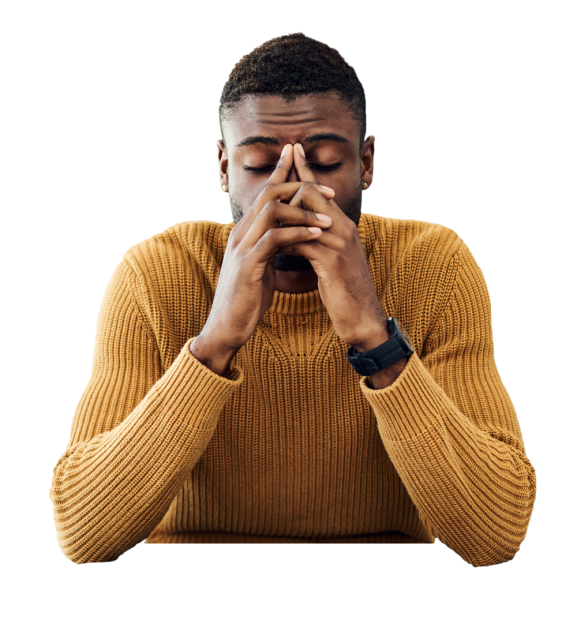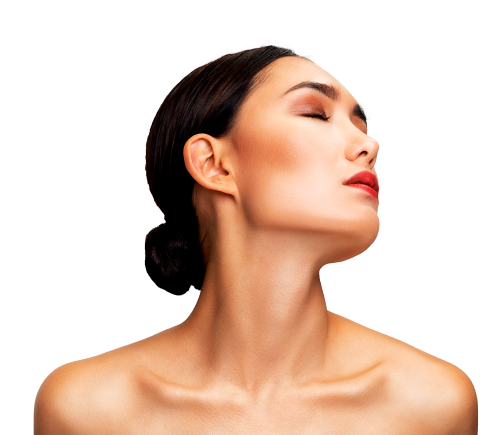A virtually imperfect life
How consumers are sharing the good, the bad, and the ugly on social media
 SCROLL FOR MORE
SCROLL FOR MORE
How consumers are sharing the good, the bad, and the ugly on social media
 SCROLL FOR MORE
SCROLL FOR MORE
 WATCH OUR SUMMARY VIDEO
WATCH OUR SUMMARY VIDEO
A 2019 Adweek article captures the essence of what it meant to be an influencer at the time: “flawless skin, structured cheekbones, perfectly manicured eyebrows, and posts that elicit an air of mystery”. Pre-pandemic, glamour, luxury, and ambiguity were at the heart of influencer culture. It paid to be a closed book with an elaborate cover – enticing people to read, but never giving too much away. This meant content in the limelight was often surface-level.
Research from as far back as 2010 speaks of social media fueling new demand for less artificiality in images; but brands and their ambassadors are currently feeling the repercussions of this long-standing trend most heavily, after lockdowns sparked a backlash against the influencer community.
Some audiences are trying to close the chapter on the curated self and its unreal standards of perfection, meaning companies and social media personalities who fail to dig deeper may miss out on a great opportunity to meet followers where they are.

"Finstas", second Instagram accounts where users share private photos to a smaller circle, have been around for quite some time. In the early days, TikTok was essentially a Gen Z app and often seen as an escape from the easy gloss of other sites. It seems younger consumers have long been aware of the constraints they feel when posting, but the pandemic has hardened this sentiment.
According to our GWI USA dataset, Gen Zs are less interested in influencers and celebrity news compared to last year. They're also less likely to want their lifestyle to impress others, and more think it's ok for people to say when they're struggling. Gen Zs are not only a key consumer segment, they’re powerful trendsetters in the world of social media. If this group is a sign of where global consumer sentiment is headed, it's likely the “polished” curated self we've come to know won't have the same impact it once did; this would clear a path for more diversity and self-expression in the influencer sector.
% of social media users in each category who agree with the following statements
Across every age and gender bracket, there’s a group seeking further conversation about personal and societal challenges, and this is echoed throughout our research. The portion of American Gen Zs and millennials saying they always try to speak their mind has climbed since the end of 2020, which has enhanced general receptiveness to pages that seem to accomplish this. Right now, around a third of consumers are more willing to trust people if they know about their difficulties, rising to 44% among those who are increasingly open about how they feel online.
Recent media examples validate the existence of this mindset. Traditionally speaking, an athlete's success depends on their ability to master perfection, which is why the world was shocked when decorated gymnast Simone Biles withdrew from the Olympics in the interest of her mental health. While the move sparked some criticism, AI platform HypeAuditor found that the overall reaction on social media was favorable; and between July 26-August 2, Biles gained more than 1.8 million Instagram followers.
Every influencer or athlete will have struggled, emotionally or physically, at some point. Sharing this aspect of their life doesn’t leave a blemish on an otherwise picture-perfect profile, but often brings it down to earth in the eyes of viewers.

Online personalities who don’t feel comfortable digging this deep can peel back layers by speaking more freely about other issues. For example, social media users who gravitate toward people that acknowledge their flaws are also more likely to say they mainly use platforms as a space for sharing opinions. The apparent rising class of influencers who exist to spread ideas rather than products – known as “genuinfluencers” – therefore stands to have a positive impact on their perception of influencer culture.
Around every potentially harmful fad is an anti-movement. Alongside straightforward tags like #nofilter, which has over 3.7 billion views on TikTok and 284 million posts on Instagram, others are turning popular phrases upside-down using comedy.
Women have taken #thatgirl, a paragon of wellness who meditates at 6am before drinking a kale smoothie, and used it to mock superficial archetypes in the schoolyard. Likewise, pages like "Be A Man" parody toxic masculinity and the illogical outlook some men have when navigating through life. Hashtags are a prime way for brands to insert themselves in trending conversations, as long as they’ve considered existing moods by checking the relevant stream of posts before taking part.
Similar to influencer engagement, where the number of global internet users following them has mostly stayed consistent over time, the main change in filter usage during the pandemic doesn't relate to the practice itself, but ideas around it.


Filters are spreading in certain parts of the world, as others turn their back on them. Since 2020, Europe and North America have experienced a drop in the percentage of Instagram, Snapchat, and TikTok users applying filters, while MEA and APAC have witnessed significant upticks. As they become increasingly common, unedited images are often viewed as refreshing.
Around 1 in 5 social media users want to see pictures that don't use filters from the people they follow, but the stakes for professionals choosing to modify content are higher. This year, Norway made it illegal for influencers to share retouched photos without a disclaimer, and this line of thinking is catching on among consumers.
% of social media users in each category who...
*those who like to see influencers/creators posting about beauty, fashion, travel, or fitness
Even filter users aren’t letting these alterations slide. They tend to have an aspirational outlook on life, so we’d expect them to be less bothered by promotional posts that blur reality to inspire followers; but their demands tell a different story. Compared to the average, they’re more likely to want companies to be authentic.
A growing number of brands work in long-term partnerships with influencers, rather than on one off-projects, which means they’re associated more closely with the content their ambassadors create. While editing professional posts isn’t illegal in the vast majority of countries, businesses can stay ahead of future regulations by ensuring they have a strong set of guidelines that all collaborators are briefed on; and untouched work can give both parties an edge in today’s age of curated perfection.
2020 was dubbed the year of the “photo-dump”. And there’s a reason why many relished bundling a group of random photos together at a time when societies were undergoing real hardships: they wanted a break from their carefully curated online self which didn’t chime with reality.
As we cover in our “More than skin deep” article, ditching the glam is a trend in itself. It’s wrong to assume that those no longer chasing the old idea of “perfection” have grown less fashion-conscious. Consumers who say they’re less interested in using filters demonstrate above-average concern for their online image and are considerably more likely to cite posting about their life as a top reason for using social media. The “in” aesthetic may have changed, but many continue to pursue it.
% of social media users who most want to see the following from people/groups they follow
In the present day, a tightly controlled, shiny version of ourselves doesn’t boost likeability in the same way it used to. Past research has demonstrated the advantages of candid (rather than posed) pictures as a way of making people seem more genuine, and it’s likely photo-dumps achieve something similar.
While there’s still demand for inspirational images that look good, some consumers want content to better reflect the reality of post-lockdown life and support people. Luxury or fashion brands that traditionally rely on glamour shots might drive growth by adding some eccentricity to their marketing mix. Whether that’s in the form of raw, messy images or self-deprecating memes, the up-and-coming vibe is characterized by light-heartedness and impulsive creativity.
When trying to tap into this mood, the question should always be: what best captures me or my brand? Followers often see through attempts to seem relatable, hence the term “curated imperfection” and the sour taste it’s left in some people’s mouths. Ultimately, authenticity isn’t an aesthetic that can be mimicked, but something brands need to get across – in whatever way they can.
Businesses stand to benefit from tapping into the casual posting trend, which offers an easy way to capture what happens behind the curtain. Though the current formats and hashtags designed to counteract curated perfection might not be around in a few years’ time, the spontaneity and realness they’ve unleashed is set to stick around.
Investing in these qualities, both from a brand and influencer marketing perspective, will help players adapt in an online social climate where many want to see the world in all its tainted glory.
